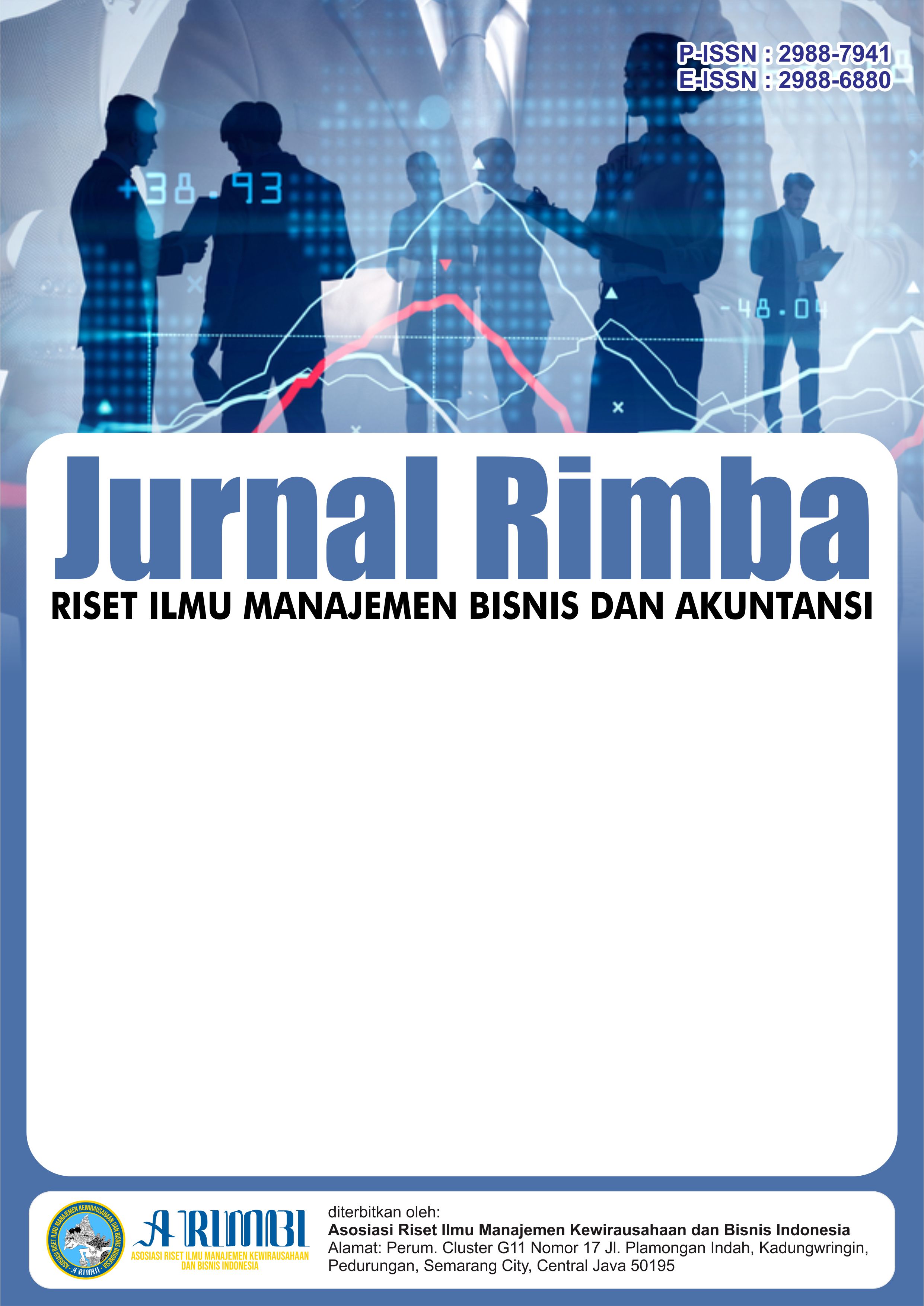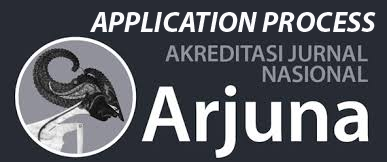Perlakuan Akuntansi Piutang Serta Seberapa Besar Pengaruhnya terhadap Laporan Keuangan
DOI:
https://doi.org/10.61132/rimba.v3i2.1733Keywords:
Accounting Treatment of Receivables, Reserve Method, Financial ReportsAbstract
Uncollectible receivables have a considerable risk and can reduce the level of company profitability. Therefore, every company needs to pay special attention to the management of receivables so as not to cause losses. One of the appropriate methods for recording bad debts in the financial statements is the reserve method. Therefore, the company forms a reserve based on estimates of receivables that are estimated to be uncollectible. The purpose of this study is to evaluate the way accounting treats receivables and how this impacts the financial statements. Using primary data, this research was conducted at KOPERINDO JATIM Kandat, which is located at Jl. Raya Kediri, Kandat Village, Kandat District, Kediri Regency, East Java 64173. Quantitative descriptive analysis was used to analyze the data. The results of the analysis show that, using the percentage of sales approach, the total amount of bad debts will reach Rp23,272,860 in 2024. In contrast, using the reserve method with the percentage of receivables approach, the amount of bad debts will reach Rp120,669,520 in 2024. Based on these results, the calculation of the reserve method with the percentage of receivables approach is in accordance with the theory, which aims to add the amount of accounts receivable to the total receivable.
Downloads
References
Andika, Cicilia. 2016. “Analisis Perlakuan Akuntansi Piutang Untuk Menilai Kewajaran Penyajian Laporan Keuangan Pada CV. Sinar Jaya Di Blitar.”
Astri, Djayanti, Banteng. 2013. “Analisis Pengakuan Piutang Tak Tertagih Dan Penyajian Laporan Keuangan Pada PT. Bank Sulut.” https://ansdoc.com/analisis-piutang-tak-tertagih-dan-pengaruhnya terhadap-penyajian-laporan-keuangan.
Harahap, S. Syafri. 2018. Analisis Kritis Atas Laporan Keuangan. Raja Grafindo Persada.
Hery. 2013. Akuntansi Dasar 1. Jakarta: Gramedia Widia Sarana Indonesia.
Hery.(2015). Akuntansi Dasar 2. Jakarta: Gramedia Widia Sarana Indonesia.
Hutauruk, M.R. 2017. Akuntansi Perusahaan Jasa Aplikasi Program Zahir Accounting (Versi 6). Indeks.
Ikatan Akuntansi Indonesia. 2017. Standar Akuntansi Keuangan Entitas Tanpa Akuntabilitas Publik (SAK ETAP).
Martani, Dwi. 2012. Akuntansi Keuangan Menengah. Jakarta: Salemba Empat.
Mulyadi. 2009. Sistem Akuntansi. Jakarta: Salemba Empat.
Mulyani. 2016. “Analisis Penerapan Akuntansi Piutang Usaha Pada PT. Federal Internasional Finance Cabang Ujung Batu.”
Munawir. 2014. Analisis Laporan Keuangan. Liberty.
Roosdianto, Muhammad. 2014. “Perlakuan Akuntansi Piutang Usaha Pada CV. Hana Sejati Grup Banjarmasin” 10. http://portalgaruda.co.id.
Soemarso. 2017. Akuntansi Intermedit Ikhtiar Teori & Soal Jawab Yogyakarta: BPFE. Yogjakarta.
Supariani, Niketut. 2017. “Tinjauan Terhadap Penerapan Sistem Akuntansi Piutang Dan Persediaan Pada PT. Dwiniaga Pratama Sarana Singaraja.”
Syakur, Ahmad. 2015. Intermendite Accounting. Jakarta: AV Publisher.
Warren, Fess. 2017. Pengantar Akuntansi. Edisi Kedu. Jakarta: Salemba Empat.
Weygandt, Jerry, Paul Kimmel, and Donald Kieso. 2013. Financial Accounting. Hoboken.
Yeyen, Wati. 2015. “Perlakuan Akuntansi Piutang Dagang (PSAK No.09) Pada Laporan Keuangan CV. Kebayoran Pharma Samarinda.” https://www.neliti.com/public%0Aations/30408/perlakuan%0Aakuntansi piutang dagang psak%0Ano09 pada laporan keuangan pt kebayoran
Downloads
Published
How to Cite
Issue
Section
License
Copyright (c) 2025 Jurnal Rimba : Riset Ilmu manajemen Bisnis dan Akuntansi

This work is licensed under a Creative Commons Attribution-ShareAlike 4.0 International License.






